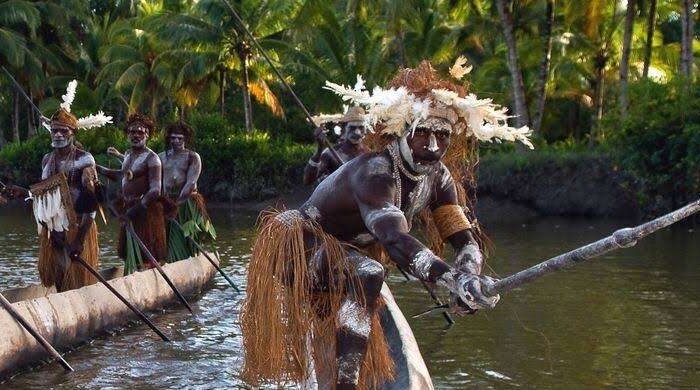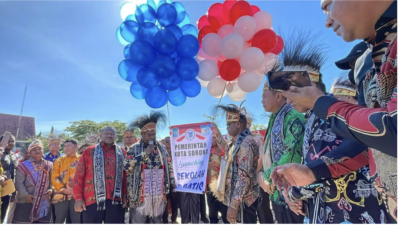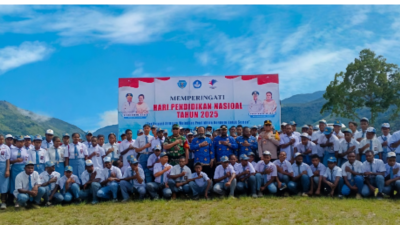Thelandofpapua.com – Papua, often referred to as the black pearl, is a treasure trove of natural wealth and unique cultural characteristics.
This enchanting region has captivated both domestic and international tourists with its distinct traditions and customs, passed down through generations and preserved in daily life.
Let’s dive into some of the cultural legacies that make Papua a fascinating destination.
Traditional Houses: Honai and Jew
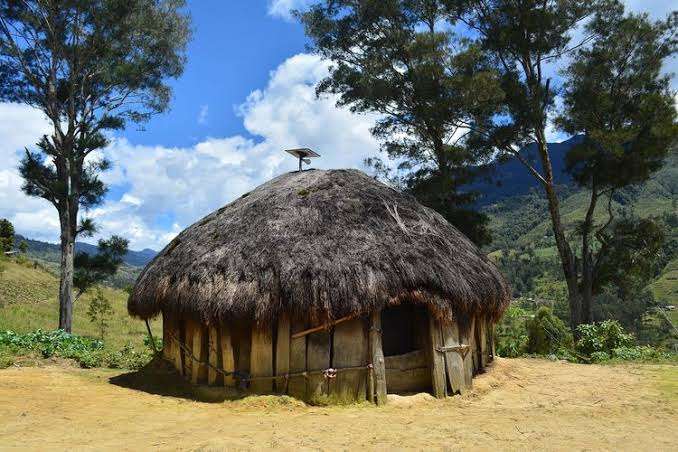
Honai: The Mountain Dwelling
In the highlands of Papua, you’ll find the traditional house known as Honai. Resembling a mushroom with a roof that looks like a coconut shell, the Honai is small, windowless, and built entirely from straw and wood. This two-story house serves as both a sleeping area on the first floor and a relaxing space on the second.
Jew: The Coastal Abode
For the coastal Papuan communities, traditional houses differ in shape but use similar materials. Take the Asmat tribe, for example. Their traditional house, called Jew, is long and wide, accommodating hundreds to thousands of people. This architectural diversity highlights the adaptability of Papuan culture to different environments.
Traditional Clothing: Koteka and Ewer
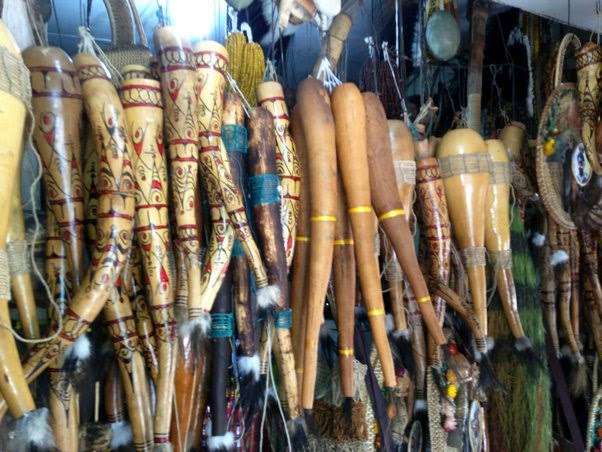
Koteka: The Iconic Garment
In the mountainous regions, the koteka is a common sight. This garment covers only the male genitalia and is typically made from the dried skin of an old water gourd. The koteka is a striking example of Papua’s practical yet unique approach to clothing.
Ewer: The Cultural Attire
At cultural events, you’ll often see Papuan people dressed in Ewer. This traditional attire includes a skirt made from woven sago leaves and a headdress shaped like a bird of paradise, adorned with various small accessories. The Ewer showcases the rich artistry and symbolism inherent in Papuan culture.
Traditional Ceremonies: Weddings, Sasi Planting, and More
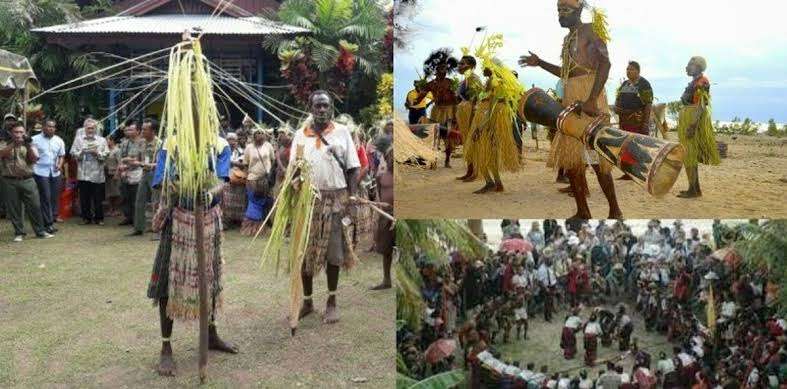
Papua is home to numerous traditional ceremonies, each with its unique customs. Wedding ceremonies, for instance, feature antique plates as dowry, symbolizing the groom’s bravery. Death rituals vary, with some tribes cutting off fingers of the living family members to honor the deceased.
The sasi planting ceremony, a form of death ritual by the Marin tribe, involves planting wood 40 days after a person’s death and removing it on the 1000th day.
Traditional Customs: Stone-Burning, Tattoos, and More
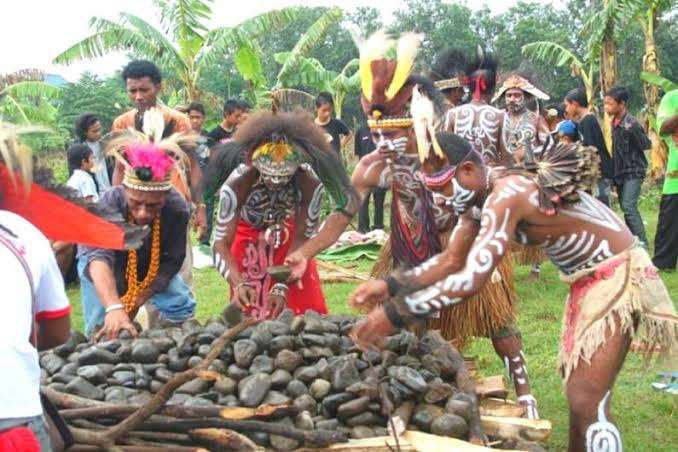
Papua’s customs are a direct link to its ancestors. The stone-burning tradition, one of the oldest, is a communal event expressing gratitude and brotherhood.
Tattooing is another long-standing tradition, with designs passed down through generations. Other customs include the finger-cutting ritual during death ceremonies and the Biak tradition of delivering dowries with songs and flags.
Traditional Food: Seafood Delicacies and Sago Delights
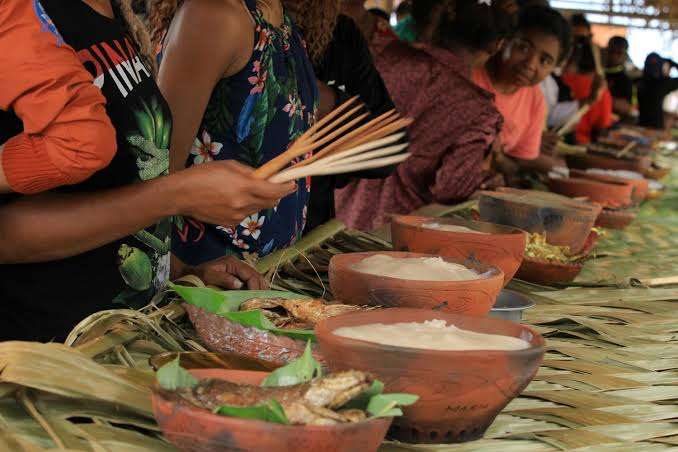
Papuan cuisine, rich in seafood, offers a variety of flavors. Papeda, a yellow tuna soup with sago porridge, and Manokwari grilled fish are popular dishes.
Unique foods like sago worm satay and sago martabak provide a taste of the region’s adventurous palate. Wrapped fish, resembling pepes but encased in taro leaves, showcases the creative use of local ingredients.
Traditional Weapons: Bows, Arrows, and Stone Axes
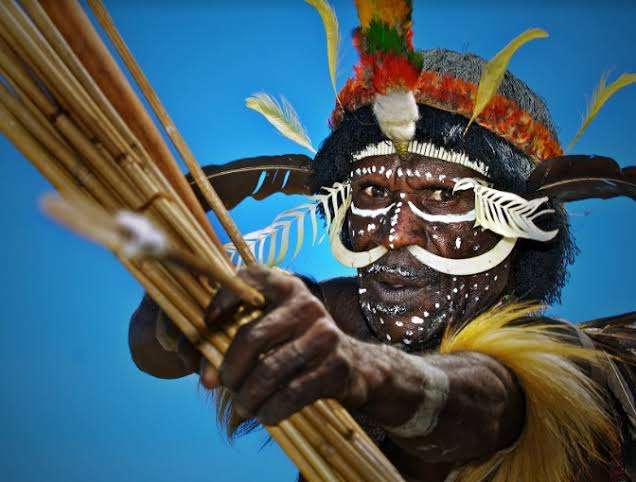
Papua’s traditional weapons reflect its resourcefulness. Bows and arrows, made from rumi wood and animal bones, are used for hunting and warfare.
The stone axe, the oldest traditional weapon, serves multiple purposes, from cutting meat to processing sago. These tools are a testament to the ingenuity and survival skills of the Papuan people.
Conclusion
The cultural heritage of Papua is a vibrant tapestry of traditions, customs, and practices that continue to thrive. From the architectural marvels of traditional houses to the intricate designs of traditional clothing, the region’s cultural legacy is a living testament to its rich history.
Whether through ceremonies, customs, food, or weapons, Papua’s unique culture offers a captivating experience for all who visit. Explore this black pearl and immerse yourself in the timeless traditions of Papua.

